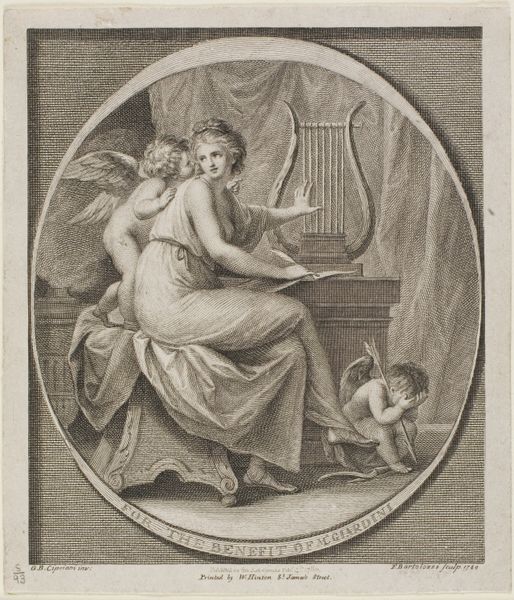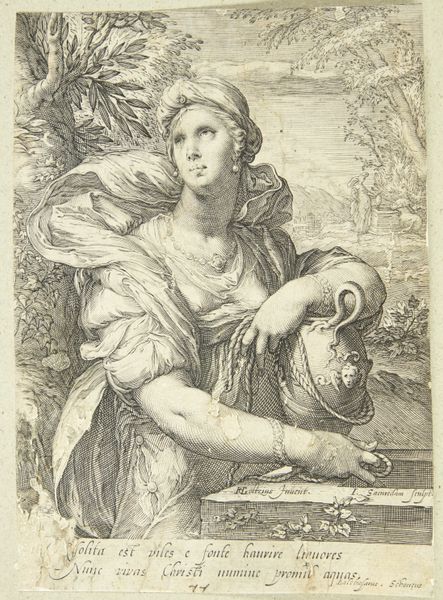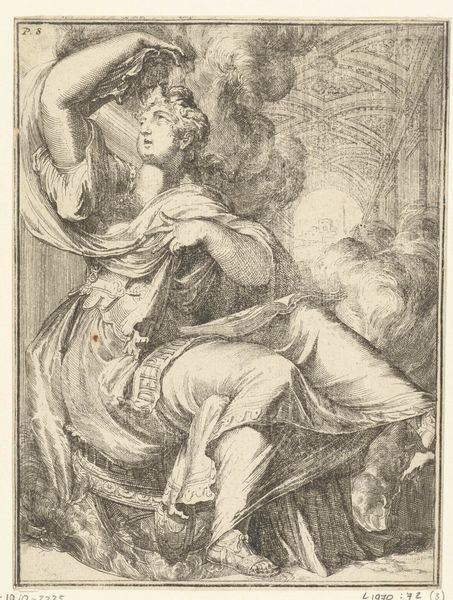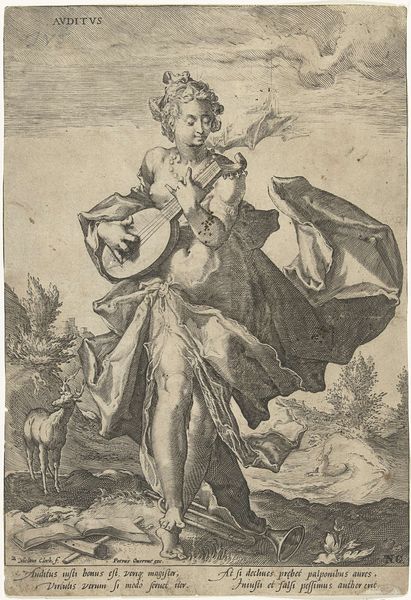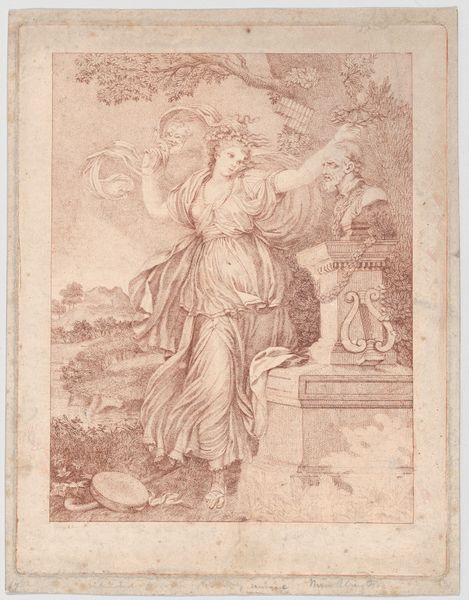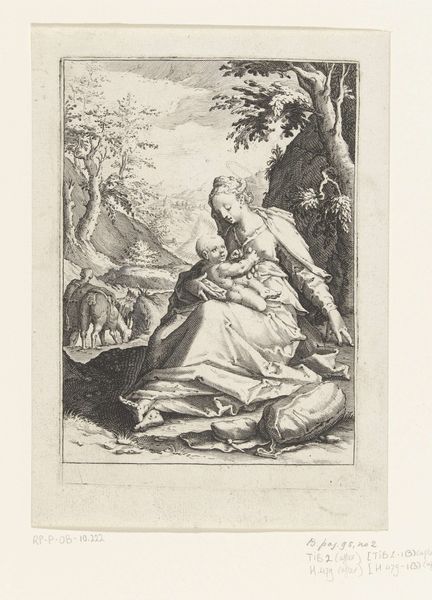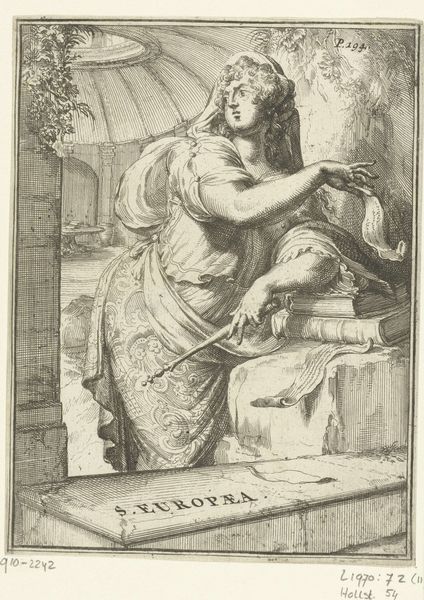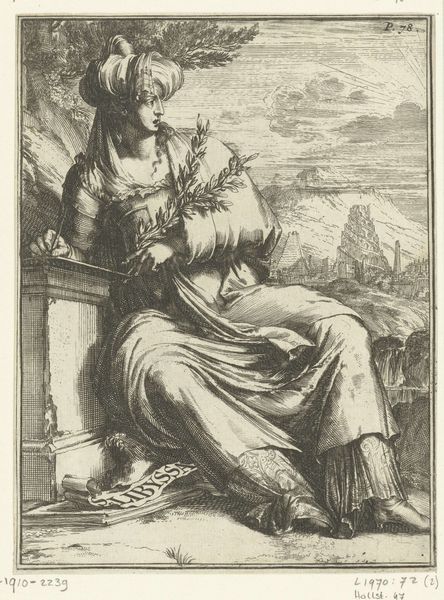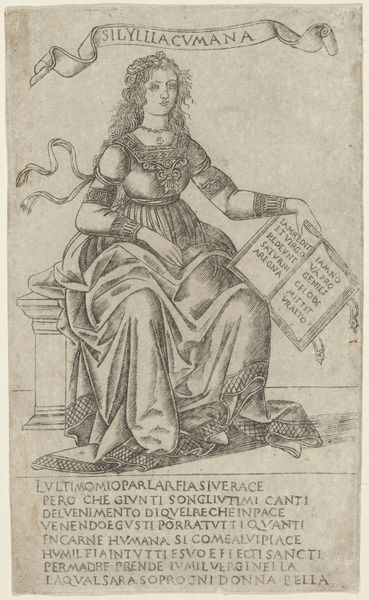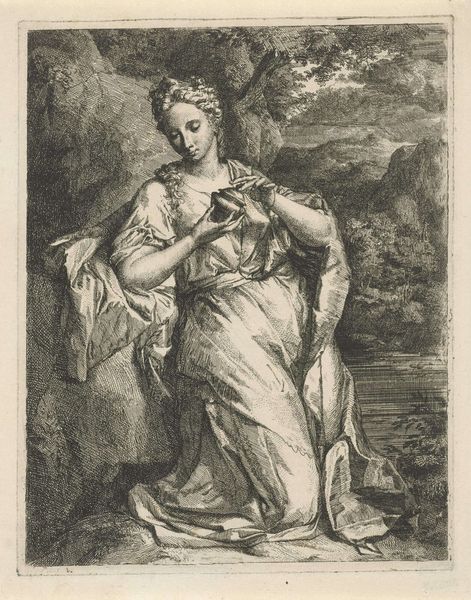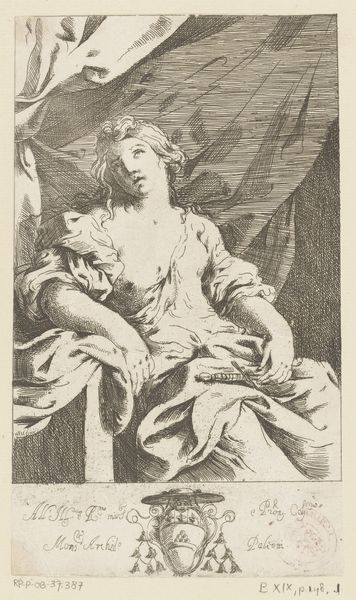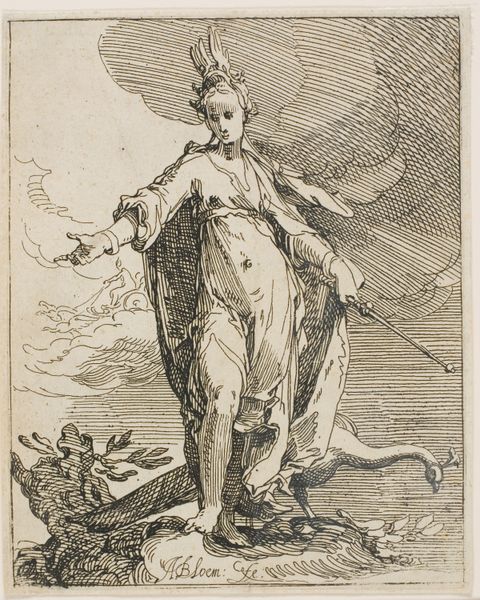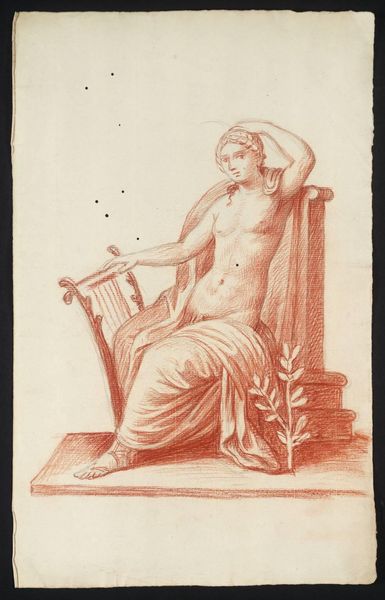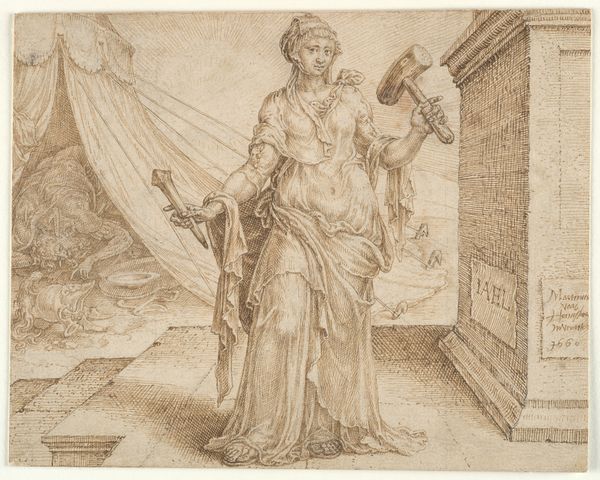
Amor inspireert een jonge vrouw, die met de ene hand een lier tokkelt, en met de andere hand schrijft 1751 - 1807
0:00
0:00
angelicakauffmann
Rijksmuseum
drawing, paper, pen
#
portrait
#
pencil drawn
#
drawing
#
neoclacissism
#
toned paper
#
facial expression drawing
#
light pencil work
#
allegory
#
pencil sketch
#
charcoal drawing
#
paper
#
pencil drawing
#
pen
#
portrait drawing
#
pencil work
#
history-painting
#
academic-art
#
pencil art
Dimensions: height 257 mm, width 211 mm
Copyright: Rijks Museum: Open Domain
Editor: Here we have Angelica Kauffmann’s “Amor inspireert een jonge vrouw, die met de ene hand een lier tokkelt, en met de andere hand schrijft,” a drawing from around 1751 to 1807. The drawing seems very delicate, almost like a quick sketch before a larger work. I'm curious, what catches your eye in this piece? Curator: What I find compelling is how Kauffmann employs fairly basic materials – pen, pencil, and paper – to portray the cultural production of art itself. The subject, a woman composing music and verse, highlights the labor involved in artistic creation. We're seeing the *means* of artistic production, rather than just a finished product. Editor: That's interesting. So you’re saying it’s about more than just a pretty scene; it's commenting on the actual work of being an artist? Curator: Precisely! Consider the pen in her hand, the paper on which she writes, and even the lyre, all tools for crafting art. The toned paper itself adds another layer; it wasn’t merely a blank canvas, but a deliberately chosen material. It represents a specific choice in the construction of the artwork. What statement do you think Kauffman wanted to emphasize regarding material means in art-making, by placing those ordinary elements on center stage? Editor: I suppose it’s showing the tools of the trade. That artistic skill comes from having the correct materials and access to proper instruments such as paper, pens and lyre. Also it makes the whole creation feel tangible. The drawing really brings into focus the real-world requirements behind art-making, that can easily be missed when gazing at some grand painting hanging in a palace. Curator: Exactly. The raw, material components aren't just incidental; they’re integral to understanding the artwork's meaning and its cultural context. Editor: That perspective really reframes the artwork for me. I initially saw a classical scene, but now I see it as a reflection on artistic creation and material considerations. Thank you for pointing this out. Curator: It was my pleasure! Considering how art is crafted materially allows us to consider its purpose and its place in culture.
Comments
No comments
Be the first to comment and join the conversation on the ultimate creative platform.
